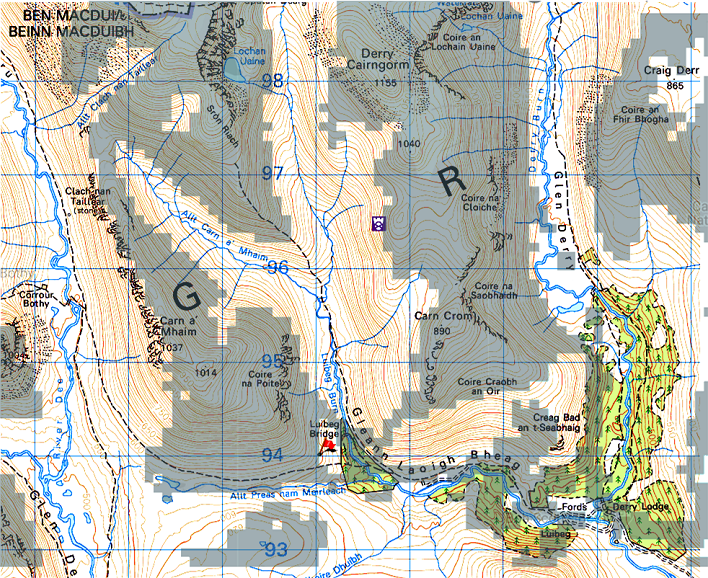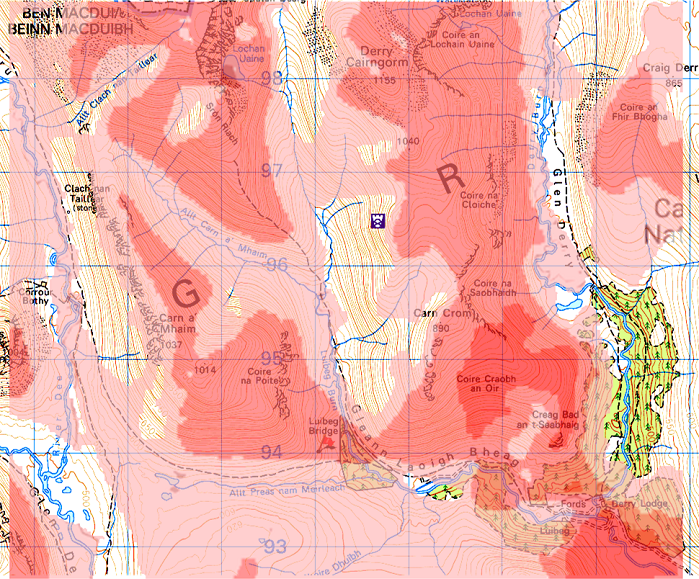Answering MPs, who asked whether Total Not Spot (TNS) masts in uninhabited Wild Land are value for money, the CEO of Building Digital UK recently told the UK Public Account Committee:
“…once you know where those sites are, each of the clusters as they go through planning will have to have a business plan …to demonstrate what the individual and specific benefits for those locations are”.1
Business plans sound promising but good luck to Mr. Creamer, the BDUK’s boss, with demonstrating the benefits of these masts. Previous studies have valued mobile coverage at £804 per premise per annum2 or £3 per visitor per day 3. For premises, the calculation in wild land and similar remote areas will be easy, since £804 (or any other sum) x zero is err… zero. For typical TNS areas like Corrour there are an average 3 walkers/ per mast/ per day 4, so the benefit would be £9 x 365 or £3,285 per year against which each mast costs £1M!
But even a creative valuation of the benefits needs to compare what the Shared Rural Network (SRN) programme is offering in the Highlands with what already exists. The SRN target is 4G @2MB/s, from at least one operator, over 95% of UK land area.5
Service from only one of the four networks means that three quarters of customers will get no service, except emergency calls. In the UK, calls to the emergency services currently use the 2G network, although plans are afoot to switch off 2G and enable 4G emergency calling in around 2030.6
To find the true ‘added value’ of TNS masts, you therefore need to make two comparisons:
- current 4G coverage from the best operator compared with proposed 4G coverage from one operator; and
- current 2G emergency coverage compared with future 4G emergency coverage.
The maps below look at these comparisons for the proposed TNS mast at Luibeg in the Cairngorms – which is still part of the SRN plan even though the initial planning application was withdrawn (see here) with the Terminator-style comment ‘we’ll be back’. The flag is the proposed mast site:

In this area, EE currently has the best 4G coverage, while Vodaphone is best for 2G:

It is worth looking at this quite closely. The proposed Luibeg mast site is technically in a 4G not-spot, but walkers on the Lairig Ghru path can currently get 4G (from at least one operator) all the way from Derry Lodge to Glen Dee. New 4G coverage from the mast will only be seen to the north and south of the main Lairig Ghru path. For emergency calls the 2G not-spot consists of small patches on the steep W. slopes of Carn Crom and Derry Cairngorm. Walkers there are rarer than Ptarmigan pteeth!
It is also noticeable that 2G coverage is currently better than 4G. This is true in many rural areas, because although 4G and 5G give higher data rates, they require more masts per km2 for various technical reasons. 4G is, for example, less tolerant of low signal strength than 2G. For homes or businesses, data speed is the market driver, so the more G’s the better. But for voice coverage in Wild Land, 2G is arguably a better technology.
2G currently covers 96% of the UK land area7 so that, even if the SRN meets its 4G target of 95% coverage, the switch will not bring emergency coverage to large areas for the first time. There will be small winners and losers, but overall there will be no significant change. For emergency calls, the value added by 4G TNS masts is nil. The maths is turning out to be very easy!
You may ask – why switch off 2G? The mobile industry and Ofcom want to switch it off to re-allocate its spectrum to new high data-rate technologies like 5G or 6G 6. More data, more speed, more revenue. Makes sense in the cities. To smooth the path to 2G switch-off in 2030, Ofcom has said it “expects MNOs [Mobile Network Operators] to deliver the same level of 4G coverage so that customers do not experience a reduction in coverage” 6. So perhaps the main ‘benefit’ of TNS masts in the Highlands is to allow 5 or 6G to be rolled out in the cities?
The UK mobile market is worth £14 billion per annum 8 so, from the perspective of London, spending £500M over 10 years in the Highlands to allow market expansion is small beer, and any minor environmental damage is the price of progress. From the perspective of the Highlands, however, it makes no financial sense – and the unique environment of the Highlands is its key asset.
Mobile phones are short-range by design – hence the term ‘cell phones’. They only communicate with the nearest masts, one mast at a time. So there is no technical reason which prevents 2G being retained in Wild Land, while re-allocating its spectrum elsewhere. Once clearly identified, there are engineering solutions to most problems. The challenge for the SRN programme is identifying who their real Customers are, being clear about the ‘Customer Requirement’ is and caring about every Customer.
References
- UK Parliament Public Accounts Committee 22 April 2024 https://committees.parliament.uk/event/21303/formal-meeting-oral-evidence-session/
- Improving Mobile Connectivity: A Rural Community Study Farr Point for Scottish Government (2023) https://www.farrpoint.com/uploads/store/mediaupload/1062/file/FarrPoint_rural_community_study_2023.pdf
- Estimating the value of mobile telephony in mobile network not-spots: DEFRA report (2014) https://www.gov.uk/government/publications/estimating-the-value-of-mobile-telephony-in-mobile-network-not-spots
- Corrour Estate objection to planning application 23/05895/TPNO 15 March 2024
- Forecast Coverage Improvement: Shared Rural Network https://srn.org.uk/forecast-coverage-improvements/
- Switching off 2G and 3G in the UK House of Commons research briefing https://commonslibrary.parliament.uk/research-briefings/cbp-9959/ X
- Connected Nations Summer update 2023 : Ofcom https://www.ofcom.org.uk/research-and-data/multi-sector-research/infrastructure-research/summer-2023
- Telecommunications Market Data Update Q4 2023: Ofcom https://www.ofcom.org.uk/research-and-data/telecoms-research/data-updates/telecommunications-market-data-update-q4-2023

The latest mobile phones have limited satellite connectivity so the whole question becomes redundant in the next few years.
Does anyone know whether a mast that gains consent is then immediately constructed? If masts rely on the cluster format to work effectively, do developers proceed before knowing whether other masts in the cluster have been consented?
Jane: Mast construction does not immediately follow planning consent. There are many examples of consented masts which were never built. As you say, many TNS masts are in clusters such that the most remote ones link via line of sight microwave dishes to another TNS communications hub mast to provide ‘backhaul’. If this link mast fails to get consent, the whole cluster would need to be replanned. The tactics used by SRN – not consulting about the overall plan but instead revealing the mast sites one by one in individual planning applications – is a weakness, because a few rejections make the whole strategic plan fall apart.
Thanks for that clarification, David, that’s what I guessed must be the case. I think one of the applications I objected to the other day in Glen Coe is a link mast. The SRN strategy does seem to be one of obfuscation. I’ve been using the Shared Rural Network Mast Action Group’s FB page to keep on top of the relentless stream of applications but there’s a need for more people to object to make sure the applications go to committee and aren’t simply waved through.
Thanks for this informative paper. I tried to make these arguments over Luibeg so, to have the technical information will strengthen the argument should an application ‘be back’.
The government really needs to rethink this element of the strategy. It’s a well intended policy but with unintended consequences.